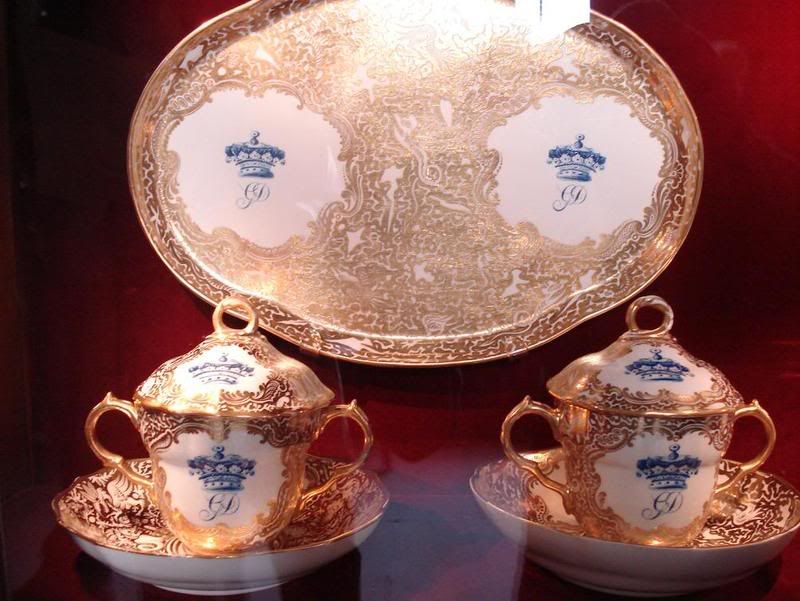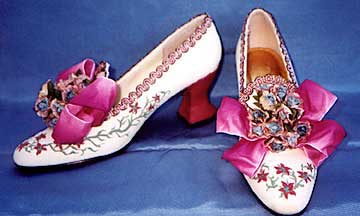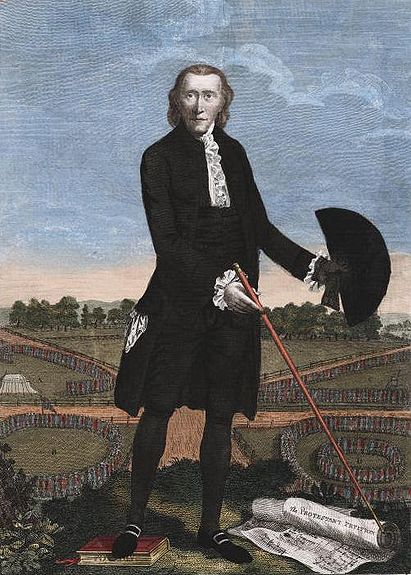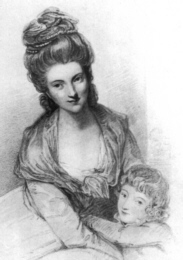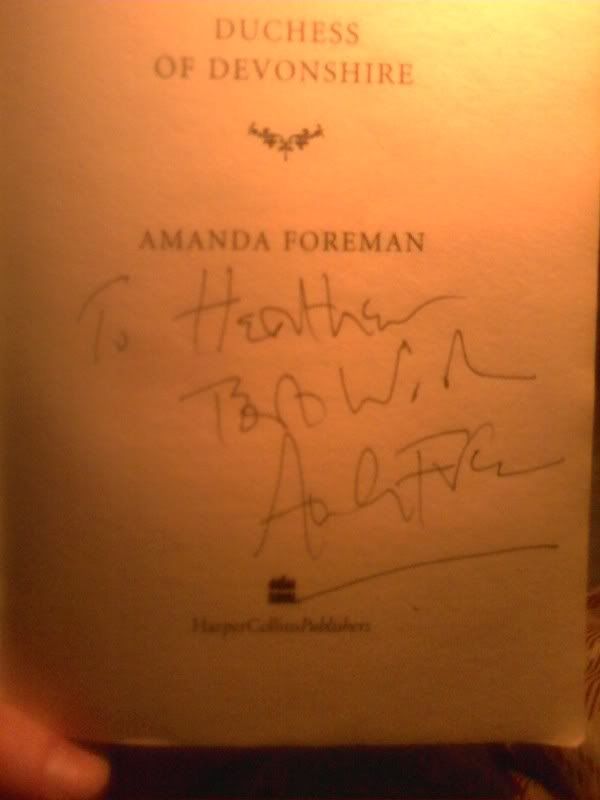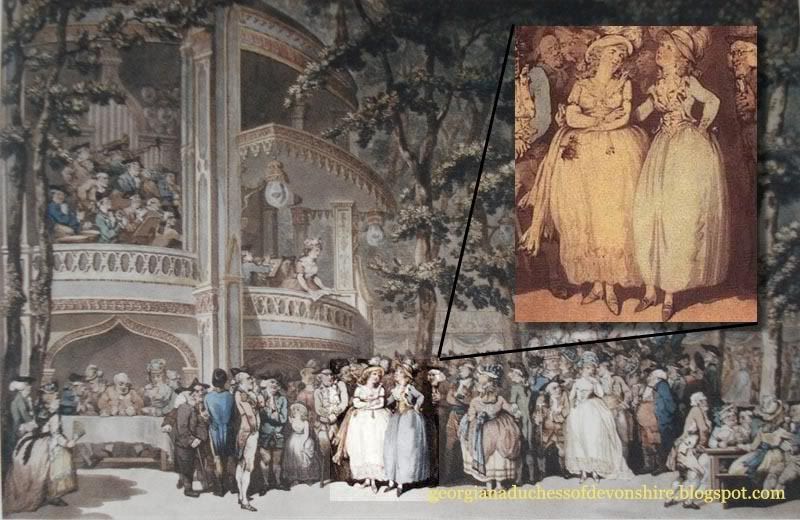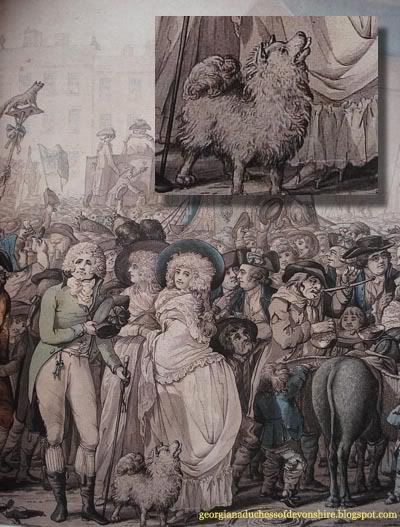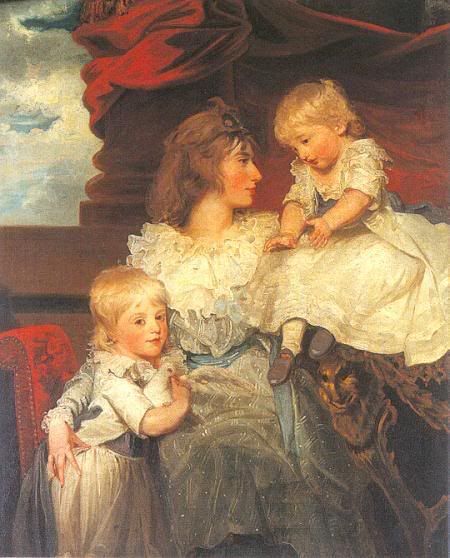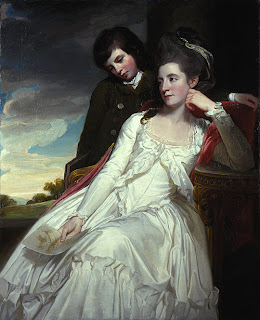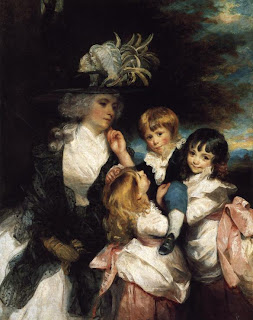 M
Mary Wollstonecraft began her life in humble beginnings in London in 1759. Her family was not poor but her father squandered their money which forced the family to move to several places. He also turned out to be a drunken brute and was abusive to his wife. At the age of 19 Mary had had enough and moved to Bath to be a paid companion to a crotchety old lady. She was forced back home two years later to care for her dying mother.
Her return home rekindled her friendship with Fanny Blood, who would become her best friend. Together the two women conspired to living together and being financially independent. This was next to impossible for a woman to do at the time and the plan didn't work. However they did manage to open up a girls school. Mary got her sister Eliza involved in the school as well as a means of escape from her abusive husband. By doing this Mary doomed her sister to social crucifixion but saved her life by hiding her from her awful husband. Is it no surprise that at this point Mary became disenchanted with the whole idea of men?
She began to look at her surroundings and think about complete idiots guys were and how they were only good for sex now and then. Part of the problem, Mary thought, was that women were brought up to just accept this crap from men. She began teaching her students in a more empowering manner that she felt was more beneficial for the sex. The radical publisher Joseph Johnson was impressed by Mary's ideas and commissioned her to write
Thoughts on the Education of Girls.
Unfortunately, Fanny got married and her tuberculosis worsened, forcing her to warmer climates. Mary immediately dropped everything and followed her friend to nurse her. The school the two ladies worked so hard on fell to ruin and Fanny unfortunately did not survive the disease. Her death inspired Mary to write her only novel,
Mary which was loosely based on

Fanny and criticized young woman who imagined themselves to be sentimental heroines. I guess that means she wouldn't have liked Austen's
Northanger Abbey. Or would she??
A rebirth seemed to happen after this. Mary sought to better herself academically, learning different languages and attending intellectual dinners; consequently she began building a radical name for herself as society watched in horror. The French Revolution was a hot topic at the time, and Mary heavily disagreed with Edmund Burke's conservative views of the Revolution and in response wrote the
Vindication of the Rights of Men which horrified Burke and made her a household name. She followed up with her most famous book,
The Vindication of the Rights of Women which is regarded as one of the earliest feminist writings.
Her wanderings brought her to France during the worst of the Revolution. Here she met the American adventurer Gilbert Imlay and fell head over heels for him. He was a dashing freethinker like Mary who fulfilled her need for companionship. She gave birth to his daughter in 1791 and named her Fanny. Having a child seemed to open up maternal feelings in Mary and she seemed to appear smothering to Imlay, even referring to herself as Mrs. Imlay to protect her daughter. Imlay left her, promising to return. When he did not Mary went to England looking for him and was met with his clear rejection.This was devastating to Mary and she attempted to kill herself but was saved by Imlay. Her life in crisis, Mary decided to travel the continent, but only in the icy peaks of Scandinavia, which no one ever went to. Mary went there only with her daughter an a maid. She wrote a series of fictional broken-hearted letters to Imlay which were latter published.

She returned to England only to attempt suicide once again. Like a ghost, Mary wandered in the rain to make her clothes heavy before jumping into the River Thames. Once again, she was saved, much to her disappointment. She slowly returned to her old life in which she was in the comfort of other radical authors. One of the authors was
William Godwin, Mary's soul mate. He admitted falling in love with her in her fictionalized love letters, "If ever there was a book calculated to make a man in love with its author, this appears to me to be the book." William and Mary had very similar ideas and a certain understanding of each other. However, Mary's distrust of William's sex caused her to wait a while before a courtship could begin. William was persistent and he doted on Fanny and soon enough Mary realized he was the ideal man for her, someone who looked on her as an equal and who was a friend before a lover. Despite both parties not believing in marriage, the two were married in 1797 when it was discovered that Mary was pregnant.
Mary gave birth relatively easily to another daughter. Sadly, she contracted septicemia due to complications from the birth and after several days of agony she died. 'Devastated' does not even begin to describe William's sadness. He later went on to commemorate her in a biography.
William, being a good father, raised both his daughter and Fanny with the best childhood he could give them. He named her Mary after her mother and she went on to marry a Percy Shelley and become a famous author like her parents, writing the novel,
Frankenstein.
 Rev James Woodeforde recorded that he paid a shilling to see the pig and praised its sagacity, stating that it arranged its cards to spell and do arithmetic.
Rev James Woodeforde recorded that he paid a shilling to see the pig and praised its sagacity, stating that it arranged its cards to spell and do arithmetic. The poet, William Cowper joked in a letter that, "I have a competitor for fame...in the Learned Pig! Alas! what is an author's popularity worth, in a world that can suffer a prostitute on one side and a pig on the other, to eclipse his brightest glories?"
The poet, William Cowper joked in a letter that, "I have a competitor for fame...in the Learned Pig! Alas! what is an author's popularity worth, in a world that can suffer a prostitute on one side and a pig on the other, to eclipse his brightest glories?" Even Samuel Johnson was mesmerized by the pig, "The pigs are a race unjustly calumniated," rather than killing a piglet, we should "allow time for his education."
Even Samuel Johnson was mesmerized by the pig, "The pigs are a race unjustly calumniated," rather than killing a piglet, we should "allow time for his education."

